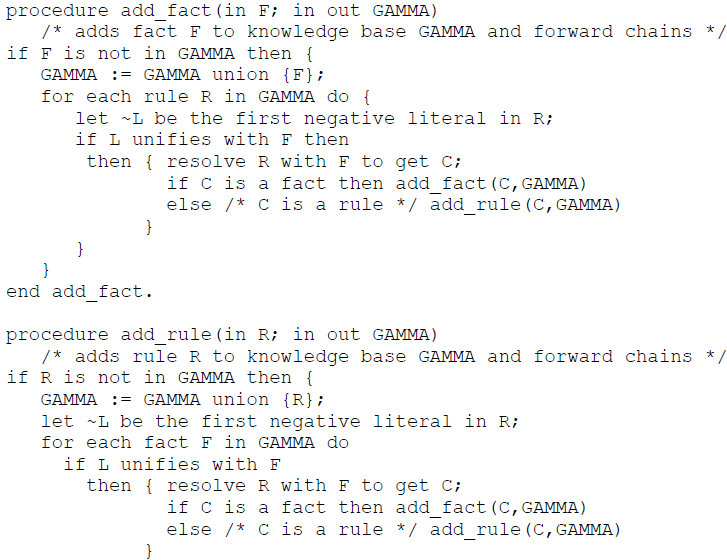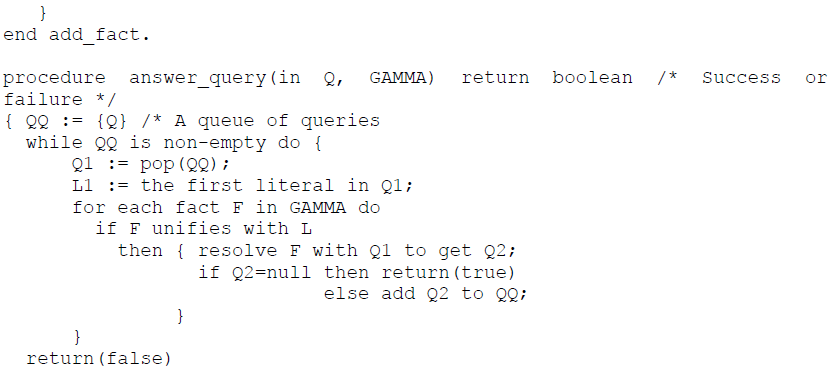Forward Chaining
Forward chaining: An alternative mode of inference in Horn clauses is forward chaining . In forward chaining, one of the resolvents in every resolution is a fact. (Forward chaining is also known as "unit resolution.") Forward chaining is generally thought of as taking place in a dynamic knowledge base, where facts are gradually added to the knowledge base Gamma. In that case, forward chaining can be implemented in the following routines.


The forward chaining algorithm may not terminate if GAMMA contains recursive rules.
Forward chaining is complete for Horn clauses; if Phi is a consequence of Gamma, then there is a forward chaining proof of Phi from Gamma. To be sure of finding it if Gamma contains recursive rules, you have to modify the above routines to use an exhaustive search technique, such as a breadth-first search.
In a forward chaining system the facts in the system are represented in a working memory which is continually updated. Rules in the system represent possible actions to take when specified conditions hold on items in the working memory - they are sometimes called condition-action rules. The conditions are usually patterns that must match items in the working memory, while the actions usually involve adding or deleting items from the working memory.
The interpreter controls the application of the rules, given the working memory, thus controlling the system's activity. It is based on a cycle of activity sometimes known as a recognise-act cycle. The system first checks to find all the rules whose conditions hold, given the current state of working memory. It then selects one and performs the actions in the action part of the rule. (The selection of a rule to fire is based on fixed strategies, known as conflict resolution strategies.) The actions will result in a new working memory, and the cycle begins again. This cycle will be repeated until either no rules fire, or some specified goal state is satisfied.
Conflict Resolution Strategies: A number of conflict resolution strategies are typically used to decide which rule to fire. These include:
- Don't fire a rule twice on the same data.
- Fire rules on more recent working memory elements before older ones. This allows the system to follow through a single chain of reasoning, rather than keeping on drawing new conclusions from old data.
- Fire rules with more specific preconditions before ones with more general preconditions. This allows us to deal with non-standard cases. If, for example, we have a rule ``IF (bird X) THEN ADD (flies X)'' and another rule ``IF (bird X) AND (penguin X) THEN ADD (swims X)'' and a penguin called tweety, then we would fire the second rule first and start to draw conclusions from the fact that tweety swims.
These strategies may help in getting reasonable behavior from a forward chaining system, but the most important thing is how we write the rules. They should be carefully constructed, with the preconditions specifying as precisely as possible when different rules should fire. Otherwise we will have little idea or control of what will happen. Sometimes special working memory elements are used to help to control the behavior of the system. For example, we might decide that there are certain basic stages of processing in doing some task, and certain rules should only be fired at a given stage - we could have a special working memory element (stage 1) and add (stage 1) to the preconditions of all the relevant rules, removing the working memory element when that stage was complete.